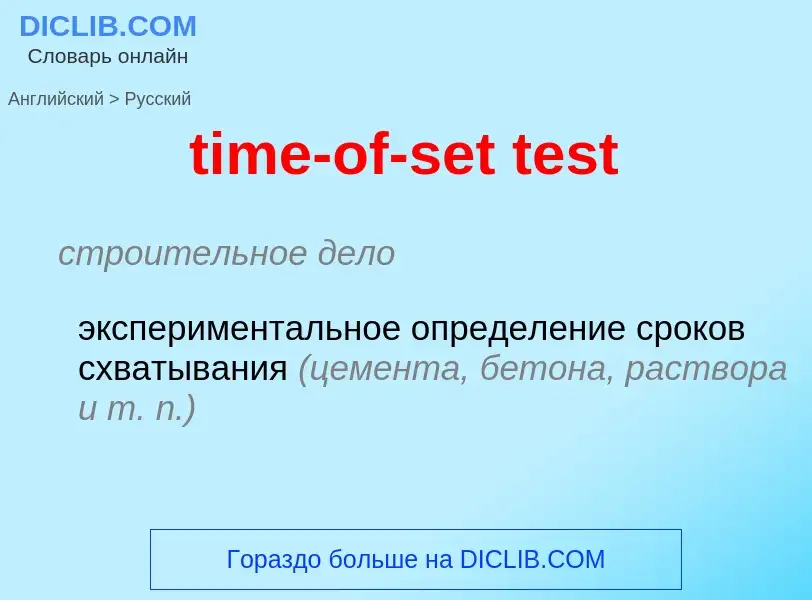Перевод и анализ слов искусственным интеллектом ChatGPT
На этой странице Вы можете получить подробный анализ слова или словосочетания, произведенный с помощью лучшей на сегодняшний день технологии искусственного интеллекта:
- как употребляется слово
- частота употребления
- используется оно чаще в устной или письменной речи
- варианты перевода слова
- примеры употребления (несколько фраз с переводом)
- этимология
time-of-set test - перевод на русский
строительное дело
экспериментальное определение сроков схватывания (цемента, бетона, раствора и т. п.)
медицина
время Квика
протромбиновое время
['sɔmbə]
синоним
математика
семейство множеств
[kwɔ'dreniəm]
существительное
книжное выражение
четырёхлетний период
['beilfaiə]
существительное
Шотландия
сигнальный огонь
костёр (особ. погребальный или праздничный)
общая лексика
время
математика
единица времени
математика
конечное подмножество
Определение
.
Википедия
In computer science, the test-and-set instruction is an instruction used to write (set) 1 to a memory location and return its old value as a single atomic (i.e., non-interruptible) operation. The caller can then "test" the result to see if the state was changed by the call. If multiple processes may access the same memory location, and if a process is currently performing a test-and-set, no other process may begin another test-and-set until the first process's test-and-set is finished. A central processing unit (CPU) may use a test-and-set instruction offered by another electronic component, such as dual-port RAM; a CPU itself may also offer a test-and-set instruction.
A lock can be built using an atomic test-and-set instruction as follows:
This code assumes that the memory location was initialized to 0 at some point prior to the first test-and-set. The calling process obtains the lock if the old value was 0, otherwise the while-loop spins waiting to acquire the lock. This is called a spinlock. At any point, the holder of the lock can simply set the memory location back to 0 to release the lock for acquisition by another--this does not require any special handling as the holder "owns" this memory location. "Test and test-and-set" is another example.
Maurice Herlihy (1991) proved that test-and-set (1-bit comparand) has a finite consensus number and can solve the wait-free consensus problem for at-most two concurrent processes. In contrast, compare-and-swap (32-bit comparand) offers a more general solution to this problem, and in some implementations compare-double-and-swap (64-bit comparand) is also available for extended utility.






